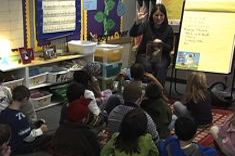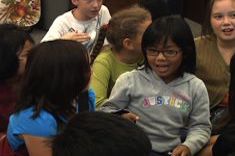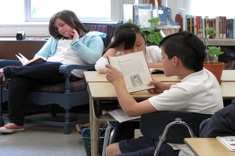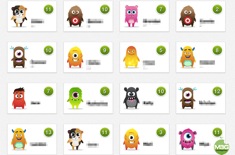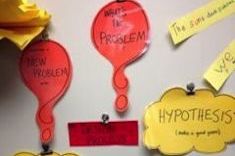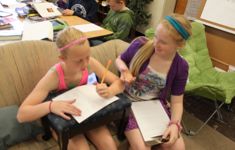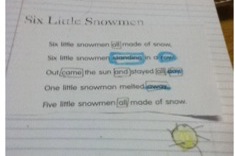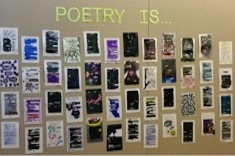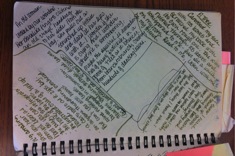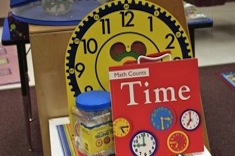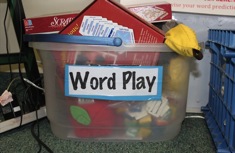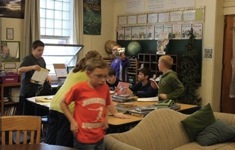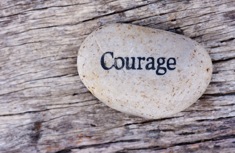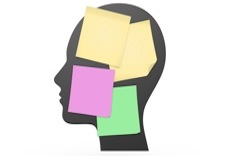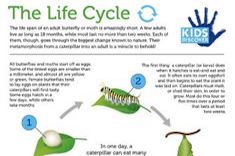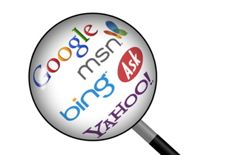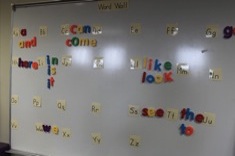Articles
Here is where you’ll find all the latest print features from our contributors. If you’d like to browse specifically by grade level, topic, or contributor, you can use the links in the right sidebar.
Latest Content
Researching Like Writers: From Read-Aloud to Notebooks
Katie Doherty finds read alouds are a valuable tool for developing middle school writers.
Intervening with Read Aloud
Jan Burkins and Kim Yaris are using read alouds as an intervention strategy with struggling learners.
Whole-Class Conversations for Read Aloud Closure
Melanie Swider discovers that conversations after read alouds are a wonderful way for students to remember and retain the learning from shared texts.
Releasing Responsibility
When it comes to producing independent readers and writers in classrooms, it’s all about the language we use. Debbie Miller has practical suggestions for bringing out the best in children.
Surviving “That Class”
Sometimes you get a class of students that pushes every one of your buttons. Shari Frost provides a case study of one teacher’s survival strategies.
Anchor Chart Changes
Mary Lee Hahn finds midyear is the perfect time for refreshing anchor charts.
Weekly Check-In Sheets
Are you finding effort from students is flagging? Katherine Sokolowski develops check-in sheets as a way to lift student energy and reflection.
One Tool, Many Uses: Poetry Notebooks
Shari Frost explains how teachers get creative with poetry notebooks.
Blackout Poems and Paint-Chip Haiku: Two Fun Ways into Poetry with Adolescents
Jillian Heise uses the lowly paint-chip board to inspire poetry in her middle school students.
Giving Students a Notebook Tour
Melanie Meehan finds a notebooks tour is a terrific minilesson for helping students expand the ways they use notebooks.
Using a Sketchbook as a Tool to Teach Grammar
Melanie Swider describes how she develops notebook pages for minilessons and conferring.
The Secret to Productivity: Hard Work or Play?
Jan Burkins and Kim Yaris connect their own working lives to those of students, and consider the value of play.
Three Classroom Games for Literacy Learning and Laughter
Melanie Meehan suggests some favorite classroom games for building literacy skills.
Integrating Student Teachers into Literacy Workshops
Katherine Sokolowski gives advice for integrating student teachers into literacy workshop instruction.
Integrating Paraprofessionals into Reading Workshops
Justin Stygles decides he needs to completely rethink the role of classroom aides.
The Secret to Magical Author Visits
Prolific children’s book author Laura Purdie Salas explains why you should treat visiting authors like rock stars, with many tips and examples from her writing friends.
Channeling Monet
Andie Cunningham deals with the tension of welcoming an unhappy parent into her kindergarten classroom.
How Long?
Ruth Ayres provides a ready reference guide for the typical length of everything from a minilesson to a conferring session.
Digital Status of the Class
Maria Caplin explains how a digital status sheet saves minutes every week that add up to extra hours of instructional time over the year.
Finding Pockets of Time
Gigi McAllister gives suggestions for finding pockets of time in overstuffed schedules.
Making Time for Individual Conferences
Franki Sibberson explains how longer conferences early in the year pay dividends all year long.
Making Memories Stick: Tutoring Kirk
Max Brand tutors a struggling fourth grader who produces very little writing.
Guiding Principles for Conferring
Melanie Meehan shares what’s essential in conferring.
Infographics and the Common Core: Resources and Standards
Andrea Smith explains why infographics are more useful than ever in the age of the Common Core, and provides many links to free infographic resources on the web.
Teaching Search Skill Basics to Students
Bill Bass has advice for teaching web-based search skills to students.
Raising the Quality of Word Work
Shari Frost has some practical suggestions for more thoughtful word work.
Webquests with Middle School Students
Megan Ginther revisits a classic internet research project.
Using Google Earth to Support Readers
Justin Stygles finds Google Earth is a marvelous tool for helping students research settings in novels.
Going Public with Word Work
Maria Caplin is discouraged at the low level of transfer of new vocabulary in her fifth graders’ writing, so she makes some changes in her classroom.
The Power of Written Blind Word Sorts
Max Brand uses written blind word sorts to build student word learning skills.
Browse Content By
Type
Category
- Assessment Tools
- Big Fresh Archives
- Booklists
- Choice Numeracy
- Classroom Design
- Common Core
- Community Building
- Conferring
- Content Literacy
- Digital Literacy
- English Language Learners
- Equity
- Family Relations
- Free Samples
- Guiding Groups
- Leadership
- Literacy Coaches
- Mentor Texts
- Minilessons
- New Teacher Mentors
- Podcasts
- Poetry
- Quote Collections
- Reading Strategies
- Self Care
- Struggling and Striving Learners
- Talking and Listening
- Teacher Study Groups
- Teaching Reading
- Teaching Writing
- Word Study and Vocabulary
Author
- Melissa Quimby
- Nawal Qarooni
- Gwen Blumberg
- Julie Cox
- The Lead Learners
- Hannah Tills
- Josie Stewart
- Ruth Metcalfe
- Mallory Messenger
- Becca Burk
- Jodie Bailey
- Vivian Chen
- Mary Brower
- Tiffany Abbott Fuller
- Stephanie Affinito
- Ruth Ayres
- Leigh Anne Eck
- Heather Fisher
- Shari Frost
- Julie Johnson
- Suzy Kaback
- Gigi McAllister
- Shirl McPhillips
- Melanie Meehan
- Cathy Mere
- Debbie Miller
- Tara Barnett and Kate Mills
- Tammy Mulligan
- Dana Murphy
- Bitsy Parks
- David Pittman
- Brenda Power
- Heather Rader
- Matt Renwick
- Mandy Robek
- Christy Rush-Levine
- Gretchen Schroeder
- Jen Schwanke
- Brian Sepe
- Katherine Sokolowski
- Stella Villalba
- Jennifer Vincent
Grade Level
Choice Literacy Membership
Articles
Get full access to all Choice Literacy article content
Videos
Get full access to all Choice Literacy video content
Courses
Access Choice Literacy course curriculum and training


